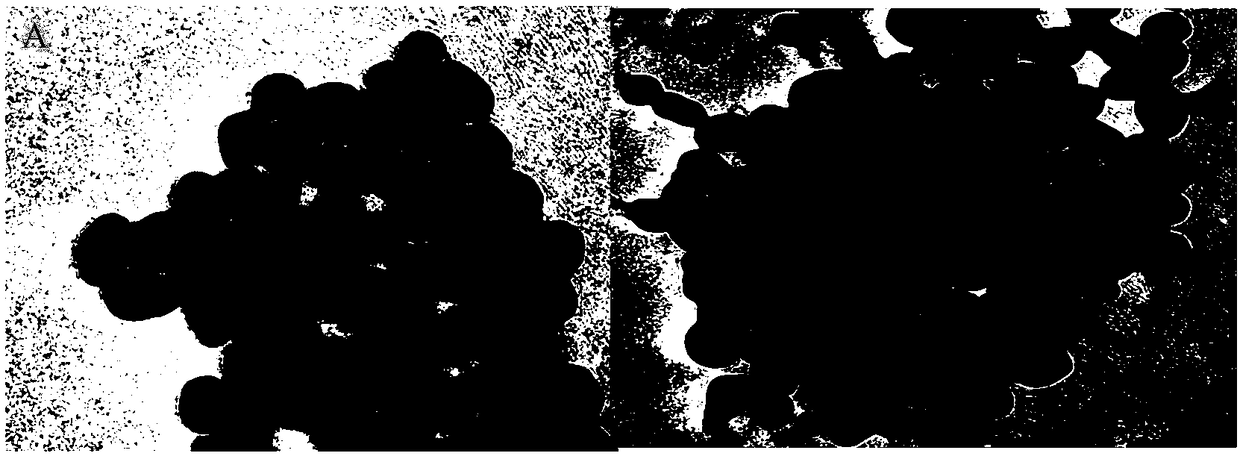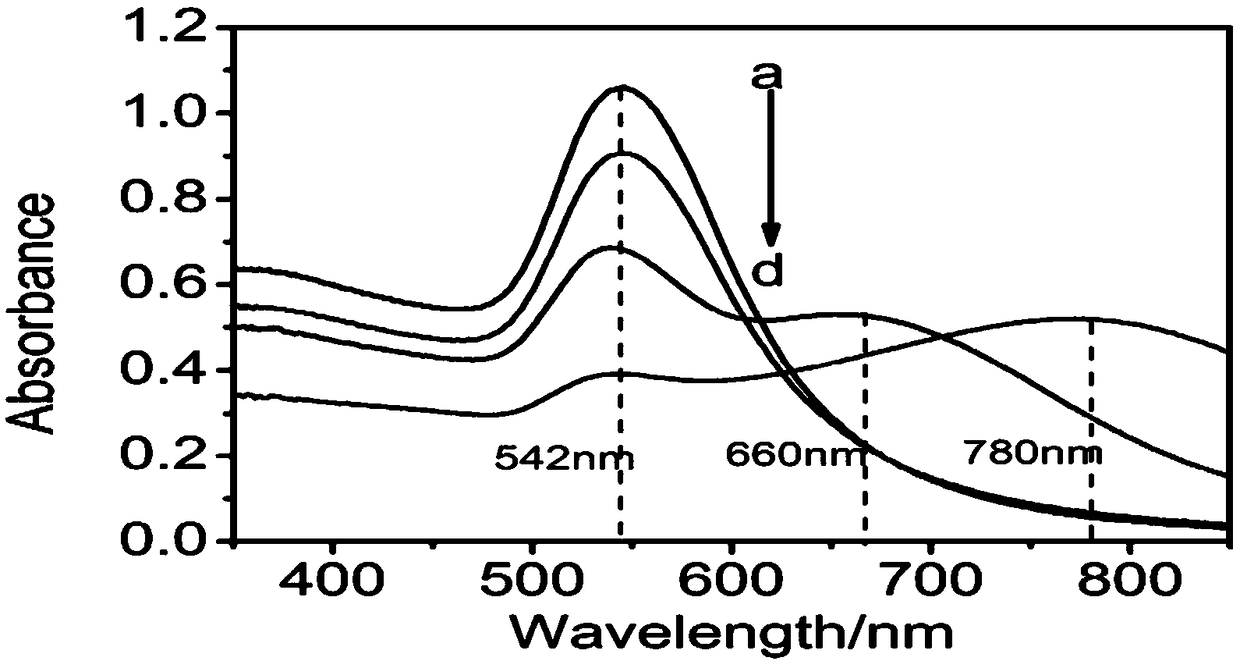Analysis and detection method for neomycin sulfate
A neomycin sulfate and detection method technology, applied in the direction of analyzing materials, material analysis through optical means, measuring devices, etc., can solve the problems of inability to meet trace detection requirements, high detection limit, etc., achieve rapid detection, simple method, highly reliable effects
- Summary
- Abstract
- Description
- Claims
- Application Information
AI Technical Summary
Problems solved by technology
Method used
Image
Examples
Embodiment 1
[0035] 1) Synthesis of Au@PVP nanoparticles:
[0036] Au nanoparticles (AuNPs) were prepared by reducing chloroauric acid with sodium citrate. Under boiling conditions, quickly add 1.4mL 1% trisodium citrate solution to 200mL chloroauric acid solution with a mass concentration of 0.01%. After the solution turns wine red, continue the reaction for 30min, and cool naturally to room temperature to prepare Au nanoparticle sol with a particle size of about 55 nm (see figure 1 ).
[0037] Preparation of Au@PVP core-shell nanoparticles by chemical reduction method. Take 20ml of AuNPs sol in a clean flask and add 100μL of 1% PVP solution. Au@PVP core-shell nanoparticles with a PVP shell thickness of about 3.5nm can be prepared by stirring at 1000r / min for 25min at room temperature. The particle size, shape and shell thickness of the core-shell nanoparticles were characterized by transmission electron microscopy. (see figure 1 and figure 2 ).
[0038] 2) After combining the Au...
Embodiment 2
[0043] 1) Synthesis of Au@PVP nanoparticles:
[0044] Au nanoparticles (AuNPs) were prepared by reducing chloroauric acid with sodium citrate. Under boiling conditions, quickly add 1.4mL 1% trisodium citrate solution to 200mL chloroauric acid solution with a mass concentration of 0.01%. After the solution turns wine red, continue the reaction for 30min, and cool naturally to room temperature to prepare Au nanoparticle sol with a particle size of about 55 nm (see figure 1 ).
[0045] Preparation of Au@PVP core-shell nanoparticles by chemical reduction method. Take 20ml of AuNPs sol in a clean flask, add 100μL of 1% PVP solution, and stir at 1000r / min for 25min at room temperature to prepare Au@PVP core-shell nanoparticles with a PVP shell thickness of about 3.5nm. The particle size, shape and shell thickness of the core-shell nanoparticles were characterized by transmission electron microscopy (see figure 1 ).
[0046] 2) The optimal ratio of Au@PVP core-shell nanoparticle...
Embodiment 3
[0050] 1) Synthesis of Au@PVP nanoparticles:
[0051] Au nanoparticles (AuNPs) were prepared by reducing chloroauric acid with sodium citrate. Under boiling conditions, quickly add 1.4mL 1% trisodium citrate solution to 200mL chloroauric acid solution with a mass concentration of 0.01%. After the solution turns wine red, continue the reaction for 30min, and cool naturally to room temperature to prepare Au nanoparticle sol with a particle size of about 55 nm (see figure 1 ).
[0052] Preparation of Au@PVP core-shell nanoparticles by chemical reduction method. Take 20ml of AuNPs sol in a clean flask, add 100μL of 1% PVP solution, and stir at 1000r / min for 20min at room temperature at 25°C to prepare Au@PVP core-shell nanoparticles with a PVP shell thickness of about 3.5nm. The particle size, shape and shell thickness of the core-shell nanoparticles were characterized by transmission electron microscopy (see figure 1 ).
[0053] 2) Quantitative analysis and detection of neom...
PUM
| Property | Measurement | Unit |
|---|---|---|
| particle diameter | aaaaa | aaaaa |
| particle diameter | aaaaa | aaaaa |
| volume | aaaaa | aaaaa |
Abstract
Description
Claims
Application Information
 Login to View More
Login to View More - R&D
- Intellectual Property
- Life Sciences
- Materials
- Tech Scout
- Unparalleled Data Quality
- Higher Quality Content
- 60% Fewer Hallucinations
Browse by: Latest US Patents, China's latest patents, Technical Efficacy Thesaurus, Application Domain, Technology Topic, Popular Technical Reports.
© 2025 PatSnap. All rights reserved.Legal|Privacy policy|Modern Slavery Act Transparency Statement|Sitemap|About US| Contact US: help@patsnap.com



